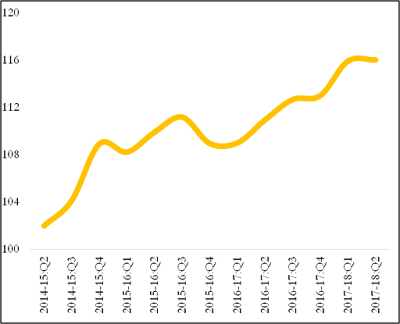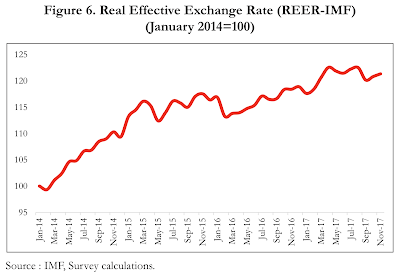Weakening USD - options for India
US treasury secretary Steven Mnuchin said recently that he backs a weaker Dollar. He said that a weaker dollar is good as it relates to trade and opportunities.
This comes on the back of US corporate tax reforms (rate reduction and other) with a solid backing of America first thinking. Mnuchin was quick to add that when he says America first, it includes working with the world; it's just that America happens to be the biggest market and trade partner for most of the countries.
The move has been criticised by experts and columnists. The main criticism has been that the US treasury secretary has given wrong signal to the markets at a wrong time. Last time they did that, to threaten Japan against a weak Yen during Clinton administration, they took almost two years to get out of the depreciation hole. A strong currency indicates the strength of the US. As Dollar happens to be the reserve currency of the world, it's important that the credibility through strength is maintained. USD has depreciated almost 10% since Trump took over, tax cuts are supposedly going to push investments, employment is at near maximum, interest rates are comfortable, and at such times the last thing needed is further depreciation of the dollar. Or so the experts opine.
I feel that USA has woken up to the potential of currency as a trade manipulation tool a bit too late. They should have done is much earlier. They have been the good boys of the trading world for far too long. China has taken them for a ride for decades, and has now given up on that game, well almost. I had blogged earlier about how China has intelligently used currency as a policy tool to boost manufacturing and exports. The strong currency leading to credibility as reserve currency is a jaded argument. There are hardly any choices for reserve currencies today. And a little bit of depreciation won't hurt. Not many would rush to Ruble or Renminbi just because dollar gets quoted at a discount.
 |
| Rupee gained 9% since mid 2016 - Economic survey |
 |
| REER - INR gaining strength |
A little digression here is warranted. I have reasons to believe that Indian merchandise exports suffer because of unnecessarily strong rupee. The rupee strength is derived from the fact that we are accumulating reserves due to net inward flow of foreign currency through capital inflows, services earnings, and huge remittances from expats abroad. We maintain a significant current account deficit on merchandise trade (roughly 200 Billion USD), and if other inflows were absent, this deficit would have ideally weakened the rupee. A strong service sector earnings, with high remittances flowing in, when clubbed with other capital flows into India, buoy the rupee up and make the manufacturing sector uncompetitive. It is kind of dutch disease syndrome where the remittances and services are harming manufacturing competitiveness. Roughly, I feel that we are at a disadvantage of around 10 to 15% of adverse currency strength from the merchandise exports point of view. The approximate level for competitive merchandise exports from India would be around Rs 75 to 80 per USD against the current level of Rs 63 to 68 per USD. On this point alone I would go with Mnuchin and say that a weaker rupee would be welcome for India's manufacturing sector.
Lest I be misunderstood, let me add here that controlling exchange rate of Rupee is no longer easy. Currency manipulation is indirectly manipulation of interest rates. By having a inflation targeting mandate, RBI has lost currency manipulation as a policy tool, as our experience during currency defence of 2013 would attest. We have a significantly deep overseas rupee currency trading market, and we cannot unilaterally change the underlying strength of the currency through domestic market manipulation. RBI's writ is limited in this area. While huge forex reserves do give a short term weapon for some currency volatility management, it cannot be a sustained strategy any longer.
Given the above, competitive devaluation of our currency can occur through public investments through easy fiscal stance. While this may shoot up inflation by a bit, it is still a risk worth taking given that our monetary sector is in a bad situation to take up any fresh lending. Through fiscal easing we would not only revive the economy but also might end up depreciating our currency. Another way of spending money would be to subsidise manufacturing exports. It's not that bad an idea after all, given that economic survey 2018 establishes causal link between subsidies and export performance.
Given the above, competitive devaluation of our currency can occur through public investments through easy fiscal stance. While this may shoot up inflation by a bit, it is still a risk worth taking given that our monetary sector is in a bad situation to take up any fresh lending. Through fiscal easing we would not only revive the economy but also might end up depreciating our currency. Another way of spending money would be to subsidise manufacturing exports. It's not that bad an idea after all, given that economic survey 2018 establishes causal link between subsidies and export performance.
Comments
Post a Comment
Comments are moderated. Your comment will be online shortly. Kindly excuse the lag